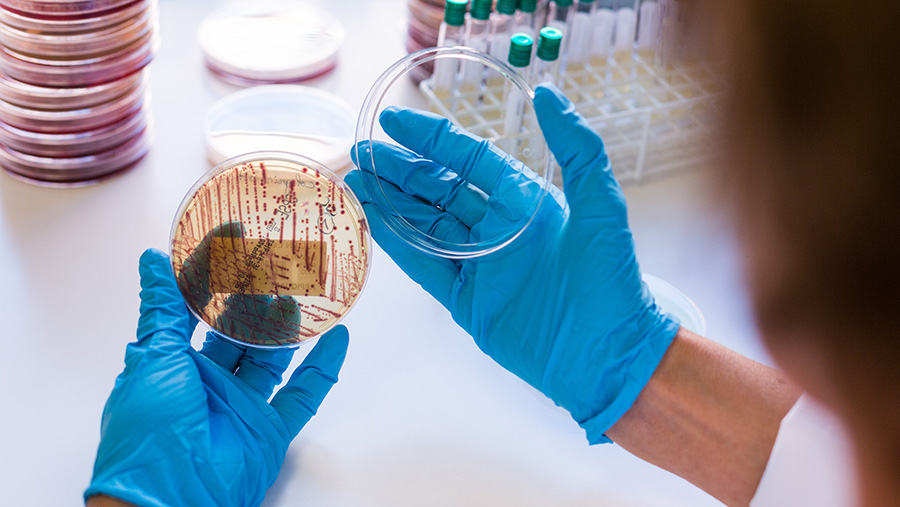Antimicrobial resistance: How it works and why it’s important
 © Burger/Phanie/ REX/Shutterstock
© Burger/Phanie/ REX/Shutterstock Antimicrobial resistance, and specifically antibiotics resistance, are high on the agenda for animal agriculture and veterinary medicine.
Government and industry targets have been set for antibiotics reduction and antibiotics use is now monitored more closely in farm assurance audits.
Farmers Weekly covers any legislation changes and regularly reports on innovations and methods that allow farmers to use fewer antibiotics and reduce agriculture’s contribution to antimicrobial resistance.
Antimicrobial resistance can cause big issues for farmers, if previously effective medicines no longer work to treat livestock infections. But it is also a huge risk to human health, as superbugs such as MRSA develop and doctors are left without medicines to treat patients.
This article aims to explain some of the key terms used when talking about antibiotics resistance, why it is such an important issue and how inappropriate use of antibiotics can accelerate the problem.
What are antimicrobials?
Antimicrobials are substances or products that kill or slow down microorganisms such as bacteria, viruses and fungi.
Antibiotics are antimicrobials are effective against bacteria, antivirals are for viruses and antifungals are used to treat fungi. Antibiotics will only work on bacteria, not other types of infection.
What is antimicrobial resistance?
Antimicrobial resistance occurs when the micro-organism develops resistance to the antimicrobial. It is not the human or animal that develops the resistance.
In livestock farming, it is more common to speak about antibiotics resistance. This is where the bacteria has developed resistance to the antibiotic.
This video speaks about antimicrobial resistance more in human terms, but the science is exactly the same for all microbes and bacteria, whether for humans, animals or both.
How does my antibiotics use play a part?
In essence, the more antibiotics bacteria are exposed to, the more likely they are to develop resistance because the more chances there are that a resistant strain will survive and reproduce. This speeds up the process of genetic evolution.
This video shows how one “mutant bacteria” can overcome a higher dose of antibiotics and reproduce so that there are lots of bacteria which are then resistant to the antibiotic.
